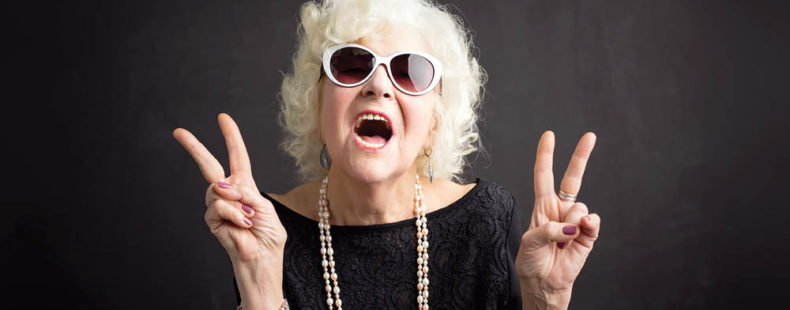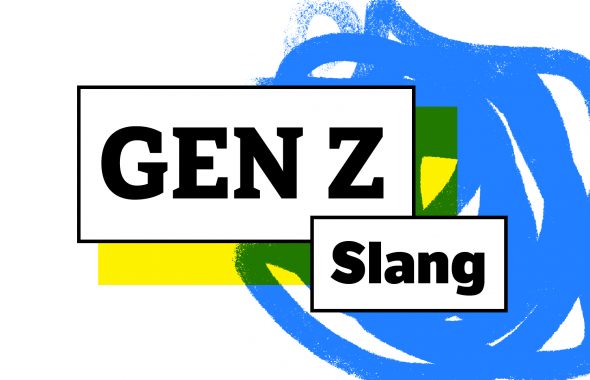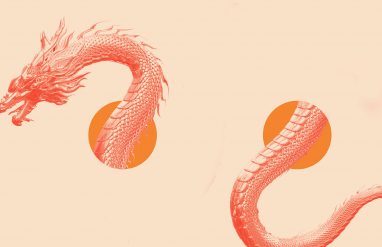Haven’t you heard? The term hipster is outdated; it’s a phrase parents and—cringe—major media sources use to describe a Ray Bans-wearing early-2000s relic. Today, advertisers use the phrase creatives or influencers to describe the demographic they’re trying to reach: trendsetting, effortlessly cool kids.
Yup, just as trends have changed in the last century (goldfish-swallowing and bellbottoms, anyone?), the language for describing a trendy person has changed, too. Check out our list to see how countercultural trendsetters were named from the beginning of the 20th century to today.
1910: cool
The word cool has always been in fashion, so it’s not surprising that it’s one of the oldest terms on this list. Since the turn of the century, cool has been used to describe someone urbane or sophisticated—perhaps, were you in Washington D.C., you might have heard someone praise President Taft’s cool moustache. (Probably not, though.) After a dip in popularity, cool later made a comeback in the 1940s jazz era and remains relevant today.
1920s: bohemian
When we think of bohemians, we often think of 1960s and 1970s fashion—peasant skirts and long hair. However, the term bohemian (named after the Czech region Bohemia) is an older one; originally used to describe French artists who lived a vagabond, gypsy life. In the 1920s, when Lost Generation Americans and expats embraced everything French and chic, they naturally adopted the term bohemian as well.
1930s: dudes and chicks
The term dude has existed in America since Irish immigrants brought it over as slang to mean a n’er-do-well male city-slicker. In the 1930s its connotation became more positive, and it started to be used to describe a cool urban man. This was paired with its female variant, chick, which was used by jazz musicians to describe a happenin’ women.
1940s: hipster/hepcat
Jazz was the birthplace of American cool (no offense, 1910–30s). Most cool terminology has origins from urban jazz clubs, including cat, beat, and hip/hep. Hep and hip were used interchangeably to describe someone in the know, and they were adopted not only by musicians but by café-goers and Kerouac-style artists and wanderers.
1950s: beatnik
Speaking of Kerouac: the beats were a countercultural intellectual movement in the 1950s and 1960s that were a reaction to post-WWII “greatest generation” values. It valued anti-materialism, art, and free speech. And, as a bittersweet reaction to this, uncool “squares” used the term beatnik to stereotype bongo-playing, marijuana-smoking, poetry-reciting beats in the public eye.
1960s: hippies
Since nothing is more hip than a mainstream website describing what’s cool, we’ll cede the description of hippies to our own definition:
“a person, especially of the late 1960s, who rejected established institutions and values and sought spontaneity, direct personal relations expressing love, and expanded consciousness, often expressed externally in the wearing of casual, folksy clothing and of beads, headbands, used garments, etc.”
Headbands? Very hip indeed.
1970s: heads
This is our first entry which has been not only a term, but a suffix: in the 70s, the term heads was used to describe someone who was “down” (with counterculture, sure, but more likely, with drugs). It was also added to the end of words to show what someone was down with. Terms like gearhead, pothead, and Deadhead were all used to show what 70s trend people used to form their cool identity. And, they’re surprisingly still used today in the same ways.
1980s: punk
In the 1980s, punk fashion and music became the cool way of showing outsider, hepcat status. The word punk was originally used in the early 1900s to refer to anyone undesirable or outside of the mainstream. And so, naturally, it was adopted to describe a music genre and social identity that is based on outsider status and rebellion against the mainstream.
1990s: alt
“Alternative” music was a section in Borders and Sam Goody (RIP) that included grunge, rock, and other tunes made by flannel and Doc Martens-wearers. Much like punk, the phrase alternative, or alt, went beyond music and began to apply to its fans: painfully cool and jaded outsiders in Pacific Northwest-inspired apparel looking for an alternative to mainstream, shiny, boy-band 90s happiness.
2000s: hipsters
Everything old becomes new again, and the 1940s term hipsters was adopted in the 2000s to describe the cool kids of major metropolitan areas. A bit older than millennials, hipsters were closely associated with Brooklyn, Vice Magazine, and experimental facial hair—hmm, maybe Taft’s moustache is pretty hep after all.













